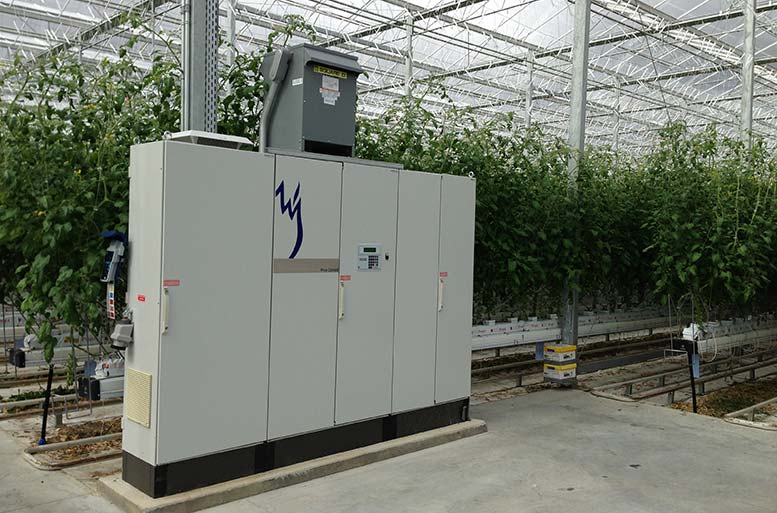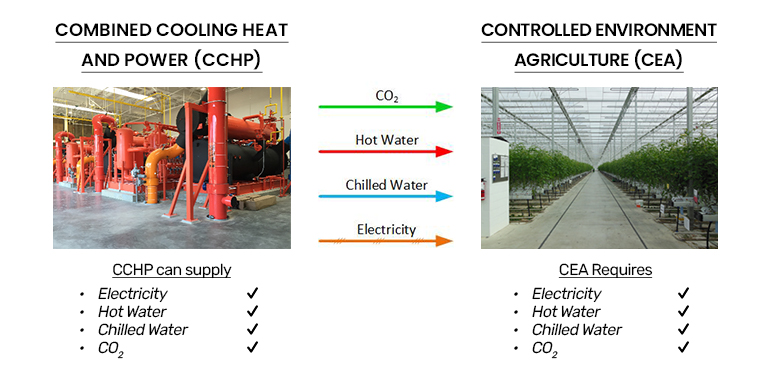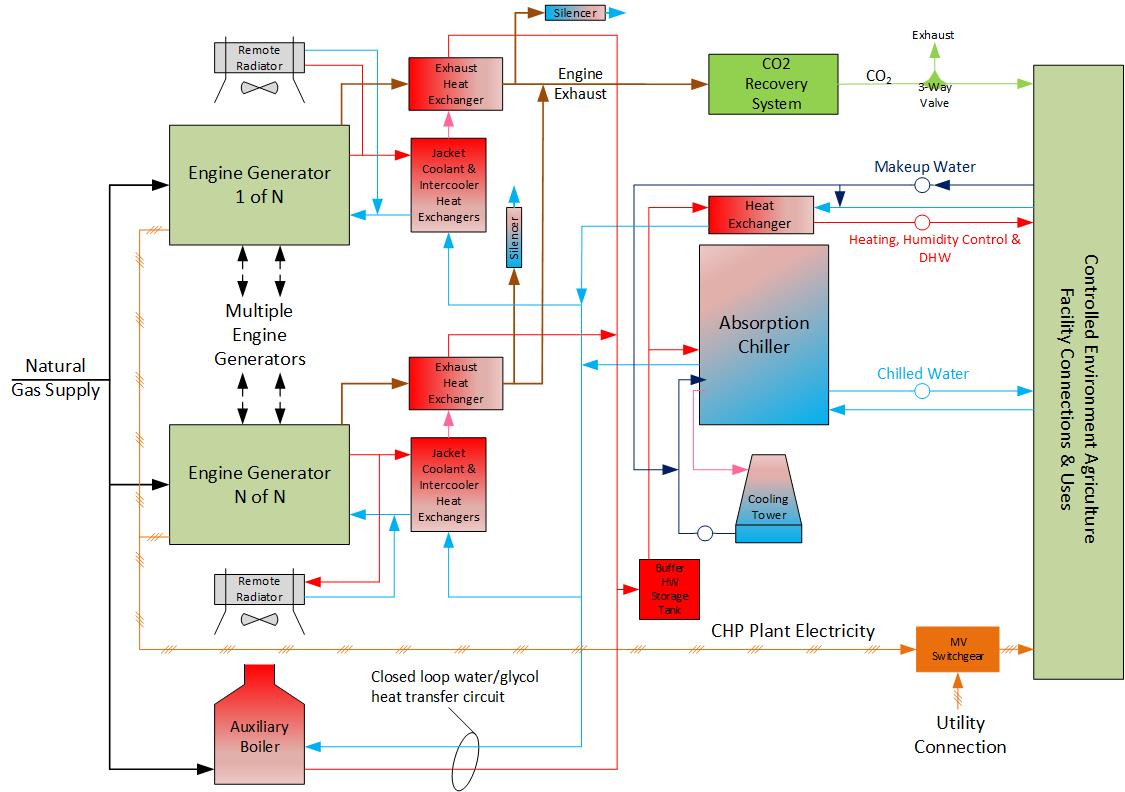Controlled Environment Agriculture (CEA) is an increasingly popular method used for growing a wide variety of crops including fruits (e.g. tomatoes, strawberries, etc.), vegetables (e.g. lettuce, leafy greens, peppers, cucumbers, etc.), and other crops such as cannabis and specialist herbs. With CEA, technology is applied to control and optimize the growing environment within an enclosed facility such as a greenhouse or indoor grow house. In most cases CEA facilities grow crops in a hydroponic nutrient solution without any soil. In addition to providing and managing optimal growing conditions, CEA facilities provide protection for the crops, help minimize interference from insects and other pests, and minimize the use of water.
In order to control and optimize a crop’s growing environment, CEA facilities carefully manage facility internal ambient conditions including lighting levels, temperature, humidity, nutrient flows and temperature, and carbon dioxide levels. A typical CEA facility will require and include:
- primary or supplemental artificial lighting (depending on natural light availability),
- ambient air heating and cooling systems,
- ventilation and humidity control systems,
- nutrient heating and cooling systems, and
- carbon dioxide injection systems.
An ideal source of energy for these systems is a Combined Heat and Power (CHP) or Combined Cooling Heat and Power (CCHP) plant (both often referred to just as CHP). With a CHP plant, the electricity requirements for the CEA are generated using reciprocating engine generators, microturbines, or small combustion turbines. That electricity can then be used to power grow lights, ventilation fans, radiant floor heating pumps, nutrient pumps, and any other CEA electrical loads. The waste heat resulting from electricity generation may be used to provide facility heating (typically radiant floor or forced air) and nutrient fluid heating in winter months and cooling in summer months with an absorption chiller. In addition, combustion exhaust gas may be cooled and cleaned, and then the carbon dioxide (CO2) it contains injected into the growing area to enhance plant growth.
The figure below shows a typical CCHP configuration. In this configuration, multiple engine generators operate in parallel with the utility grid to provide all of the CEA’s electricity requirements. Waste heat from the engine jacket cooling system, and from the engine exhaust is captured in heat exchangers and used to produce 195 – 200 oF (90 – 94 oC) water/glycol heat transfer fluid. Additional 195 – 200 oF (90 – 94 oC) water/glycol heat transfer fluid is provided if needed by a gas fired boiler. The water/glycol heat transfer fluid is then used in a heat exchanger to produce 105 – 115 oF (40 – 46 oC) hot water for radiant floor heating and nutrient water heating in winter months. The heat transfer fluid is also used to supply a hot water absorption chiller to produce 43 – 43 oF (6 – 7 oC) chilled water. This chilled water is used for nutrient fluid cooling in summer months and product cooling year round.
Because of the overall 80 – 85+% efficiency of CHP with production and utilization of both electricity and useful thermal energy (heating and cooling) from the same single fuel, CHP for CEA is very cost effective when compared to the separate purchase of electricity from a local utility and production of thermal energy in a boiler. Many CEA facilities are installed in areas where electricity distribution facilities are limited and so installation of CHP can avoid time and the high capital costs charged by the local utility to upgrade distribution lines in order to provide power. Long term contracts can be secured for the natural gas used in the CHP plant providing energy cost certainty when compared to electric utility rates. There are also tax advantages (e.g. ITC) and potential grants and rebates that further enhance the economic benefits of CHP. All-in-all, CHP is an ideal source of energy for CEA facilities.
The typical electrical load profile of most CEA greenhouse facilities is high during winter months for grow lights and heating but low in summer months. This means there may be an opportunity sell power, especially peaking power, and ancillary services to the local utility grid during summer months. This can enhance the economic benefits of the CHP plant.
Recent examples of Controlled Environment Agriculture facilities where Bridgestone Associates has been involved with evaluating and developing Combined Heat and Power facilities include:
- A 5 acre (2 ha) greenhouse in Maryland growing leafy greens
- An 18 acre (7.3 ha) greenhouse in Maryland growing fruit
- A 10 acre (4 ha) greenhouse in Connecticut growing tomatoes
- A 5.2 acre (2.1 ha) indoor grow facility in Colorado growing Cannabis
- A 130 acre (53 ha) greenhouse in Canada growing tomatoes
- A 9.2 acre (3.7 ha) indoor grow facility in Pennsylvania growing Cannabis.
In all these cases, Bridgestone’s detailed hour-by-hour load and cost modeling has shown that CHP/CCHP provides substantial savings over utility purchased power, a separate boiler plant, and purchasing liquid CO2.
In addition to detailed technical and cost modeling, Bridgestone will provide preliminary and detailed design and equipment selection of CHP/CCHP plants. For more information on how CHP/CCHP can be used in Controlled Environment Agriculture, or to discuss your project needs, please contact us.





Post A Comment